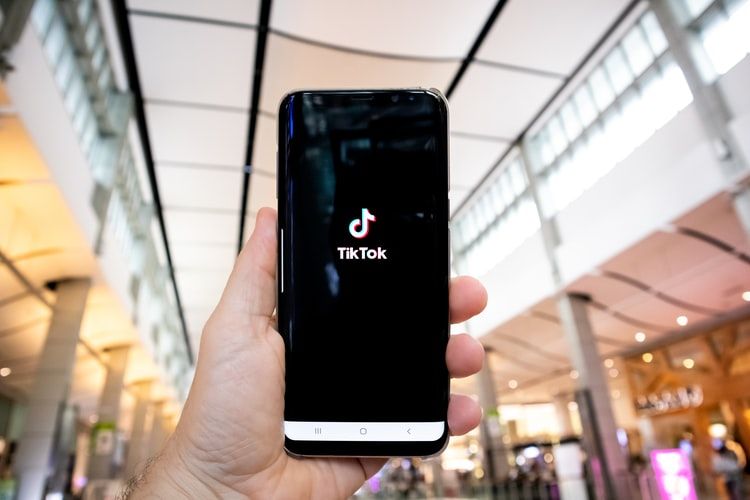
NEWS / DATA MARKETING
21 September 2020
As COVID-19 continues to disrupt the customer relationship, TikTok provides an engaging platform to reconnect with a new generation of customers. Arnaud Marro, Head of Social Media Advertising at Artefact, explores the rapid growth of the video sharing app.
With 10 million users in the UK, TikTok is the latest ‘big thing’ in social media. A truly viral content factory, TikTok is mainly aimed at generations Z and Y with an audience that skews female: 59% of users in the UK. While its global reach is far below that of Facebook or Instagram, TikTok is developing into a fast-growing network for beauty, retail, fast-moving consumer goods and entertainment.
Far from hampering the network, COVID-19 has accelerated its rise. This has been the case for most social networks during lockdown, but TikTok’s growth has managed to outpace the competition. Between 23rd and 29th March, content consumption rocketed by 86% and average engagement by 75% as old and new users flocked to the platform.
TikTok is now firmly established within the global digital landscape, confirming its status as a powerful communication outlet for marketers targeting the 15-25 demographic. TikTok can be a powerful tool for brands who know their way around it. However, first they need to understand its unique user base and the built-in features that enable them to hit the widest potential market.
The next generation
TikTok may not have the same size user base as its rivals, but what it lacks in scale it makes up for in specialisation. From a business perspective, it’s all about targeting the right customers at the precise moment in time – and TikTok speaks to Gen Z like no other platform. These young, socially-active digital natives are a core target for marketers, not necessarily because of their spending power now but their potential as customers in the future.
Of course, this isn’t a blue ocean market. Competition is fierce among Snapchat, Instagram and TikTok for the attention of the Generation Z demographic. Yet, interestingly, TikTok is distinguishing itself by building a core, exclusive audience. Almost half (47%) of TikTokers don’t use Instagram, and 30% refuse to use Snapchat.
How then has TikTok developed such a loyal following with Generation Z? Put simply, it provides them with the most appealing experience for their particular needs. The platform offers more immediacy, verticality and interaction than its competitors. It delivers fun challenges, hyperactive communities and a chance at viral fame, fast.
Where Snapchat provides strictly time-limited original content often created by professionals from brands and the media, TikTok exclusively offers content for users by users. This content is highly interactive and has a longer lifespan – and its viral, addicting nature shouldn’t be underestimated. Users spend an average of 51 minutes a day on the platform, though this surged to 63 minutes after the start of confinement.
Integrating TikTok with the marketing mix
The stickiness of the platform makes TikTok a tantalising vector for companies. They have the opportunity to capitalise on repeat, regular use by potential customers every day, making them easy to reach and engage. However, getting the most out of the platform can be difficult. Many brands are experts when it comes to owning the conversation and dominating attention on the platform, making it difficult for incomers to compete.
To level the playing field, companies should start small and focus on the innate strengths of the platform. The key isn’t to beat the competition at their own game but to align the platform towards your goals.
TikTok influences buying intent and behaviours in the short, medium and long run, with communities that build and rebuild themselves constantly. Brands should start their own TikTok communities as well as join existing ones, encouraging challenges, participation and engagement with their brand across a large, proactive user base.
A bustling community is a great springboard to raise awareness for a new product or service launch. TikTok challenges are also an effective means of earned media, delivering free additional reach when brand content is shared organically by the targets themselves. To further the reach of these challenges, companies should consider linking their social networks together. Clarins has done this effectively in the past, creating a bridge that redirects their users on Instagram towards TikTok when a challenge is available.
Brands should also take advantage of special platform features and formats, such as Top View or Brand Takeover. These give marketers strong visibility and a quasi-exclusive reach over their targets for a given duration of time. The French government, for example, has used these features to make young users aware of social distancing measures and to encourage them to stay home. This was supplemented with the #jerestechezmoi (#imstayinghome) #challenge, which rapidly gained 216 million views.
In a relatively short period of time, TikTok has built a large and influential community of users, while still being able to retain its appeal to ‘cool’, niche Gen Z audiences through immediate, interactive content. Brands can and should leverage the platform by integrating it with the rest of their social media programmes. The key is fitting in and making effective use of the campaign features and functionality.
Article published by NetImperative.com

 BLOG
BLOG






